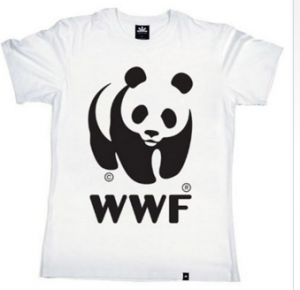The rise and rise of corporate social responsibility
There’s been a significant increase in the growth of ‘corporate social responsibility’ over the years. With more consumers than ever saying they would be willing to pay more for a product or be more loyal if they knew the products they purchase or providers they use are acting responsibly, whether it be how the products are sourced, to giving back to communities, they have a deep seated need for accountability and giving back in some way. And rightly so!
This makes us (the consumer) feel good about themselves, because they’re informed choices of ourselves. I get to spend my hard earned dollars, knowing they will be making a difference somewhere somehow. This also makes me want to shop at that company again (now I’m sticky).
One size fits all?
No way! From donating to a cause at the checkout, to donating the difference from sales made at online auction sites, there’s many ways for-profits can utilise the power of giving to attract a loyal customer base.
Retailers and corporates are relishing in delivering this as they understand how this is not only good for their brand perception, it’s good for credibility, authenticity and most importantly the dollars it represents to their bottom line. It gives their digital content depth, encourages sharing in digital social communities and creates a positive brand image.
Leaders in CSR
The French have been pioneers of driving corporate social responsibility for supermarkets by creating their ‘no food waste’ law making supermarkets responsible for food wastage and redistributing back to people in need.
Here in New Zealand I’ve seen businesses been built on initiatives that give back in some way, such as www.eatmylunch.nz. A chef has set-up an entire business based on 1 in 4 children in New Zealand living in poverty. By purchasing a lunch from them it will provide a child in need a wholesome tasty lunch.
Deep and meaningful?
Creating a corporate social responsibility strategy is a perfect forum for any for-profit to incorporate into their brand and marketing strategy, however, do consumers really care whether the cause they are helping is connected to the retailer they are engaging with?
I think they do care. But do they care enough to ask questions and investigate?
The Cotton On Group has been socially responsible for some time and I would expect there is strong brand awareness among their customers of this value. The Cotton On Foundation was set-up after the group made a donation to help finish off a health centre in Uganda. I believe this was an organic step towards the growth of the organisation it is today.
The Cotton On Foundation that provides funding including collaboration on many projects in Uganda through the sale of items in-store and online. However, the work of the Cotton On Foundation has very little to do with the products that are sold in the Cotton On and Cotton On Kids stores. Another example of greatness from The Cotton On Group was their partnerships with WWF and earth hour where they sold branded T-shirts in-store and online with a proportion of profit going back to the cause.
So how does this sit with their values, marketing messaging and with the perception of customers?
Myself, and I am sure many other customers, have handed over money to the Cotton On Foundation as it makes us feel good, but doesn’t have a direct correlation to the products that we’ve purchased. With this in mind, I believe that this is further proof that giving back is becoming more vogue and is most definitely shaping the way for-profits use CSR to engage with and attract good customers.
If you snooze you lose
So what about the retailers and other for-profit corporates who haven’t yet found their place in the CSR space? Well they’d better get their skates on before their customers decline, or at least start asking questions.
Get in shape
The majority of retailers and for-profit businesses will already have charities of choice that they choose to donate to and fundraise for, however, I’m am sure there are a lot of missed opportunities within their communications. Their CSR message can be weaved artfully into their social networks, their websites and within their regular DM communications. They can incorporate how they are making a difference with their cause to tell stories that resonate with their customers, which also creates natural opportunities to ask for donations for their cause. It also creates ‘talk-ability’.
For online retailers making on a simple change like creating a donation field at the online checkout can make a big difference.
Let’s teach them a thing or two
As you will all know, charities are fantastic at storytelling and knowing when to say please and thank you. This is a prerequisite of the not-for-profit sector. It’s the way you engage with your supporters, donors and regular givers that gives your supporters the all-important insights into the work that you do and how it makes a big difference.
It’s more than just a letter, email or Facebook post – it has depth of meaning and a deep emotional connection. This all-important piece of the puzzle is what connects to human emotion and is what I think for-profits need to work harder at delivering to create a winning Corporate Social Responsibility strategy. https://mostbet-games.net/pt-pt/
I know if the for-profits were to put into practice some of the insights and learning’s from the not-for-profit sector they would most certainly see an increase with their customers on a more human level.
3 things corporates should do
Corporates can learn many things from charity communications but I think these 3 things will go a long way to bringing their customers closer to the cause they choose to support.
- Tell the story of WHY that cause is connected to your company and SHOW your customers the connection.
- Use images of real people and show their faces looking directly at the camera. Show the NEED that your cause is supporting as well as the positive SOLUTION your support is providing. No stock images, no photo shoots. Real people, real world. It’s about authenticity.
- Tell them where their money is being spent. In exact terms explain that the company has a goal to raise $x to achieve Y outcome and that every dollar raised goes towards this goal.
As I have seen, I don’t think it really matters what the cause is that for-profits choose, although I personally feel that being as close to the cause as possible gives a better brand experience, however as long as the companies involved are connected and passionate about delivering change through the products that they sell or services that they offer then it’s a win-win situation.
Seeing is believing
We want every corporate to be a little bit more like a non-profit (just like we think every non-profit could benefit from implementing some business elements into their success). If a company wants to create a CSR strategy, it should deliver:
- great stories
- create more opportunities for their customers to advocate for the cause they are supporting.
This will help companies increase their customer experience and their bottom line.
Ways corporates can increase customer loyalty
Corporates can easily do this is by:
- Creating great video content
- online polls and
- being strong advocates for change makes customers want to get involved on an emotional as well as financial level.
Many customers will engage on an emotional level more after they’ve parted with their hard earned cash. If they believe in the cause, they will now have a deeper connection with the brand.





